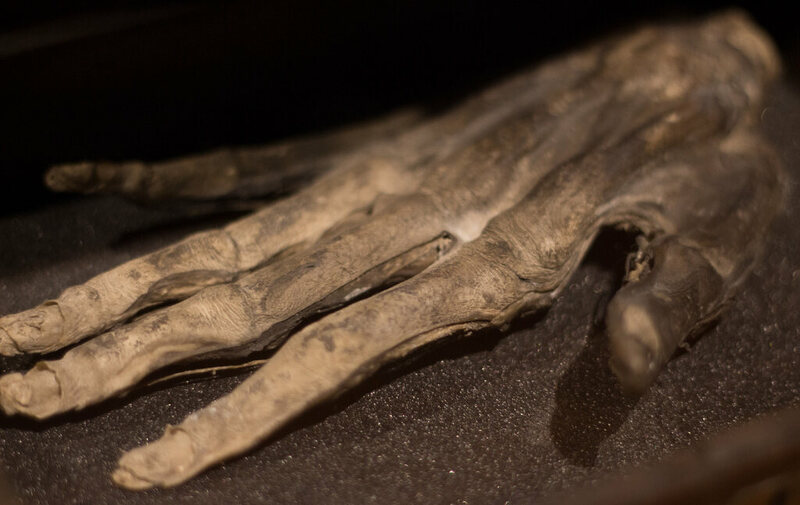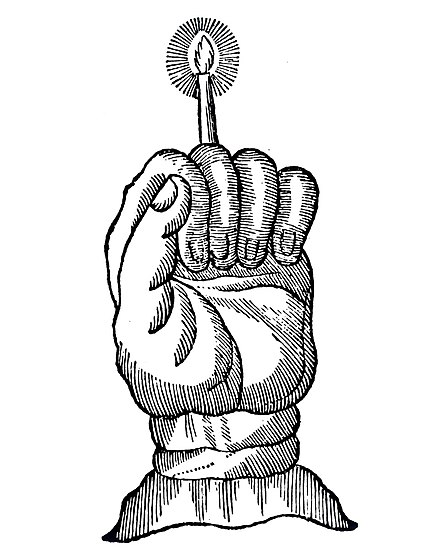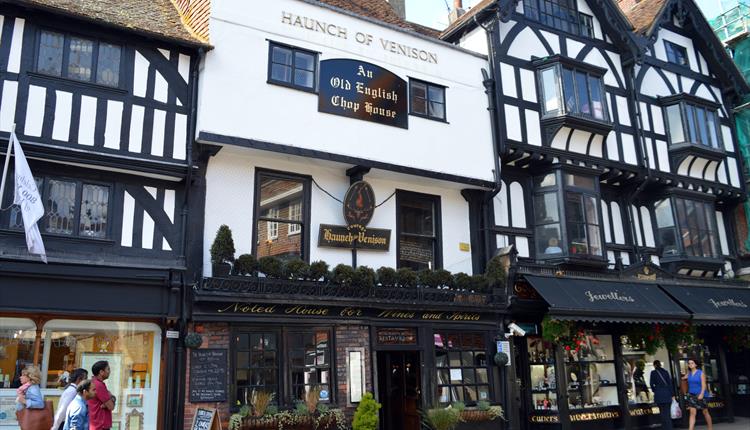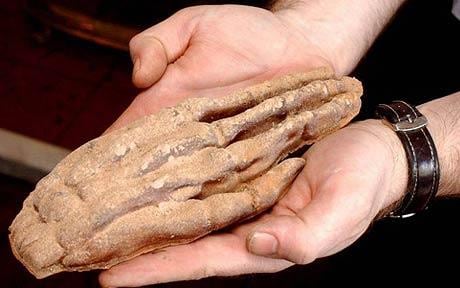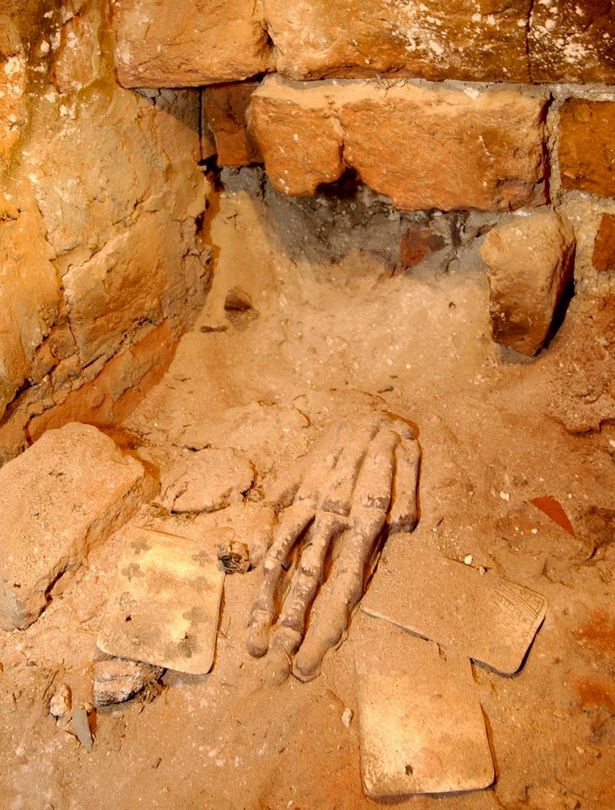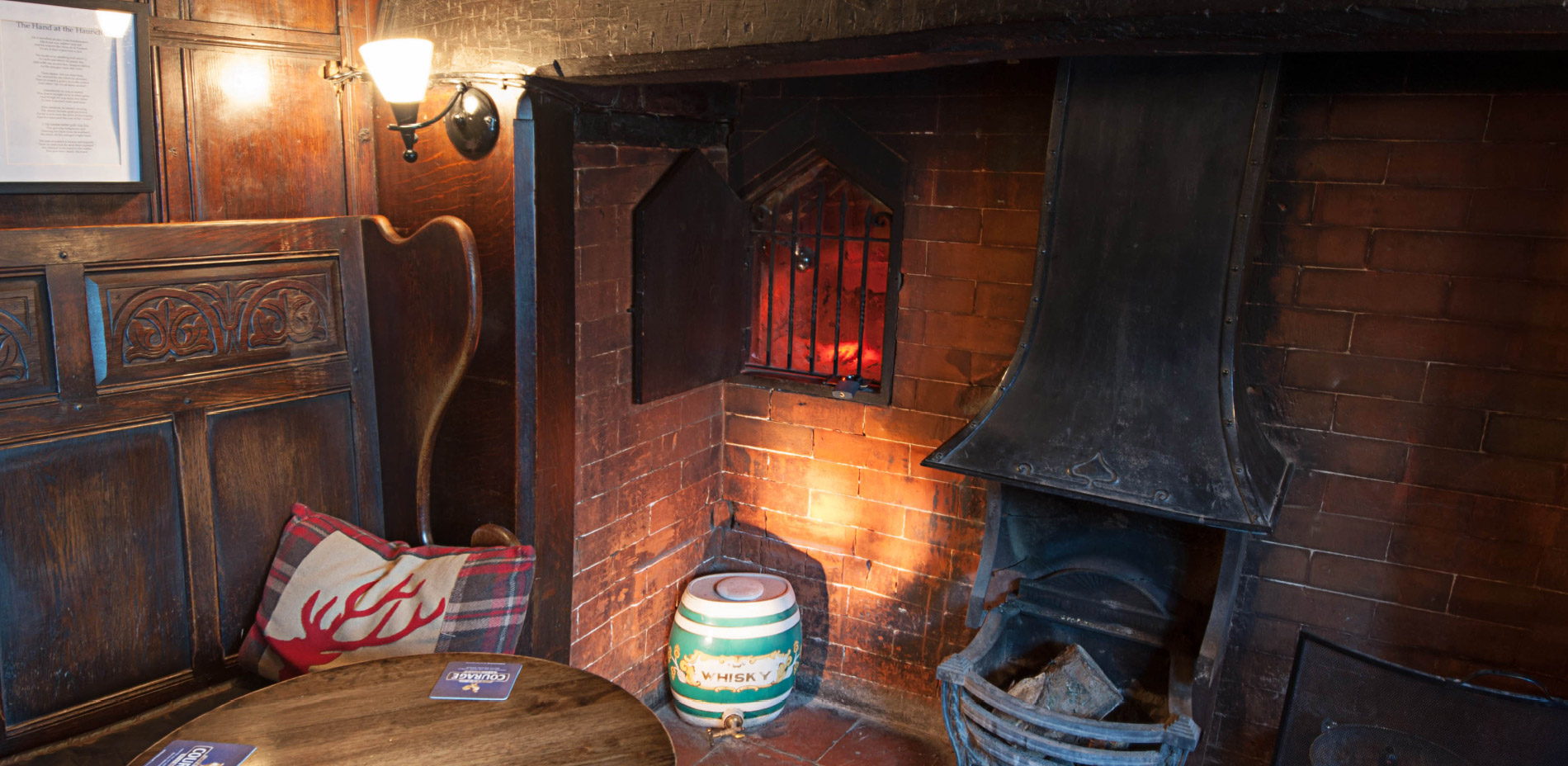Sinister Tales from a Wiltshire Pub
A Hand of Glory is the dried and pickled hand of a hanged man, often specified as being the left (the word ‘left’ itself coming from the Latin word for sinister) hand, or, if the person was hanged for murder, the hand that "did the deed."
Old European beliefs attribute great powers to a Hand of Glory combined with a candle made from fat from the corpse of the same malefactor who died on the gallows. The candle so made, lighted, and placed (as if in a candlestick) in the Hand of Glory would have rendered motionless all persons to whom it was presented. The process for preparing the hand and the candle are described in 18th-century documents and inspired short stories and poems in the 19th century. The method for holding the candle is sketched in Petit Albert, an 18th century grimoire inspired by the writings of Albertus Pervus Lucius and in the Compendium Maleficarum. The candle could be put out only with milk. In another version, the hair of the dead man is used as a wick, and the candle would give light only to the holder.
A hand of glory on a mantlepiece, in a detail of the 1565 artwork The Elder Saint Jacob visiting the Magician Hermogenes by Pieter van der Heyden
The 1722 Petit Albert describes in detail how to make a Hand of Glory, as cited from him by Emile- Jules Grillot de Givry:
Take the right or left hand of a felon who is hanging from a gibbet beside a highway; wrap it in part of a funeral pall and so wrapped squeeze it well. Then put it into an earthenware vessel with zimat, nitre, salt and long peppers, the whole well powdered. Leave it in this vessel for a fortnight, then take it out and expose it to full sunlight during the dog-days until it becomes quite dry. If the sun is not strong enough put it in an oven with fern and vervain. Next make a kind of candle from the fat of a gibbeted felon, virgin wax, sesame, and ponie, and use the Hand of Glory as a candlestick to hold this candle when lighted, and then those in every place into which you go with this baneful instrument shall remain motionless.
An actual Hand of Glory is kept at the Whitby Museum in North Yorkshire, England, together with a text published in a book from 1823. In this manuscript text, the way to make the Hand of Glory is as follows:
It must be cut from the body of a criminal on the gibbet; pickled in salt, and the urine of man, woman, dog, horse and mare; smoked with herbs and hay for a month; hung on an oak tree for three nights running, then laid at a crossroads, then hung on a church door for one night while the maker keeps watch in the porch-"and if it be that no fear hath driven you forth from the porch ... then the hand be true won, and it be yours"
The Haunch of Venison pub in Salisbury is a location with a long history. Originally built around 1320 as a church house for the adjacent St Thomas’s church and accommodated men working on the Cathedral’s spire. This ancient hostelry would later be used as a brothel and a tunnel linking the pub to St Thomas’s church was excavated so clergymen could visit without embarrassment. Recorded as an inn from the sixteenth century, it was one of the original chop houses (men only quality establishments renowned for hearty eating and good company, where businessmen gathered to hatch deals over plates of traditionally cooked meats washed down with fine wines and good ales.) It was here that an amazing discovery of a Hand of Glory underneath floorboards in 1903 was made by builders working at the pub. An enterprising landlord displayed the artefact holding a fan of playing cards and for years was preserved in a glass case.
It was an object that sparked much discussion, story and legend, giving rise to ‘The Demented Whist Player’ a stranger who arrived on the Southampton coach one evening in the 1820s looking for food and lodging. He would settle with some locals playing cards where he was losing substantially but continued to encourage the locals to up the stakes. Alcohol was flowing freely. The stranger’s win some- lose some luck began to take a turn that evening leaving him substantially ahead of the players in the game. A drunken young butcher who had lost far more than he could afford was furious and thighs began to get heated and accusations of cheating levied against the stranger. As things escalated, he drew a blade and with a single chop cut off the man’s hand at the wrist which fell to the floor still holding the five aces in its fingers.
Many believe this man died from shock or blood loss and his spirit is responsible for the phantom footfalls heard late at night in the pub. Equally there are those who believe the actions of the felon who was hanged for murder and whose hand has been preserved as a gruesome spectacle are responsible. The ghost, whoever it might be, is accused of hiding objects, moving glasses across tables, opening and closing doors and switching appliances on and off.
Over the years the hand has gone missing a number of times. It was stolen from its display case in 2004, but was secretly returned a few weeks later, before it was taken again in 2010. Following publicity the mummified hand was returned in a bubble wrap envelope courtesy of the Royal Mail. Today the legendary relic is housed more securely behind a grill in the former inglenook bread oven and attracts swaths of people desiring to take a look.

